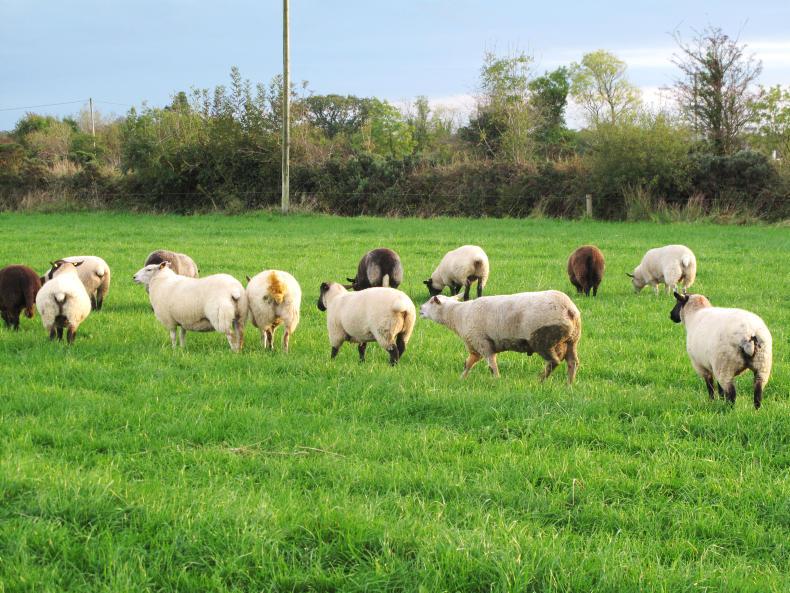Grazing management
While the focus in most flocks is on building autumn grass supplies, attention also needs to be placed on grassland management for next spring. Swards should be grazed in the coming weeks in a manner that will allow the final grazing to take place and provide a rest period of 100 to 120 days to when it will be required for grazing next spring.
There are swards on farms that are being grazed at present at a heavier than desirable cover.
The importance of not forcing lambs to graze down poor-quality grass at the base of swards has been discussed in recent weeks but it is also important that the nutritional requirements of ewes are met in the run into mating.
Ensuring ewes are at the desired body condition score (BCS 3.25 to 3.5+ for lowland ewes and BCS 3 for hill ewes) and are adequately fed will have a marked effect on breeding performance.
Where swards are of particularly poor quality, then the best approach is to keep ewes moving and come back to graze out these swards mid-pregnancy when there is more scope to lower the quality of grass offered.
Post-breeding mineral supplementation
The popular measure selected as part of the Sheep Welfare Scheme will be coming on the radar for flocks lambing in February. The start of breeding is taken as the day rams are joined with ewes and the product or combination of products used must cover a period of at least 60 days from this date.
The product label must state that it is suitable for ewes and specify the period of cover and the volume to be administered or offered on a daily basis where mineral buckets are being used.
It is important that the date on the invoice and the volume purchased tallies with breeding dates and is sufficient to cover the number of animals put forward for breeding.
Straw requirements
The straw trade is described as slow, with ongoing challenges in getting straw baled and demand gradually building. Some farmers have straw left over from last winter which is a benefit given yields are back. It is worth acting early and getting required supplies on hand early in the season.
Lowland ewes will require 7kg straw bedding per week to absorb all urine while hill ewes have a lower requirement of 4kg to 5kg. As a rule of thumb, one 4x4 round bale weighing 140kg will be sufficient to bed 18 to 20 lowland ewes per week or 30 to 35 hill ewes.
This requirement is generally for ewes fed silage and the requirement may be reduced by 20% to 30% for ewes fed hay or high dry matter haylage. Applying straw with a straw blower will also reduce the level of usage. It is important to also count in the requirement for lambing pens, with about four to five bales required for every 100 ewes in a system targeting a 24- to 36-hour turnaround period.
Fertiliser deadline
The last day for applying chemical nitrogen and phosphorus is 14 September. There is no deadline for potassium, with the backend of the year the ideal time to address soils with a potassium deficiency.






 This is a subscriber-only article
This is a subscriber-only article









SHARING OPTIONS: